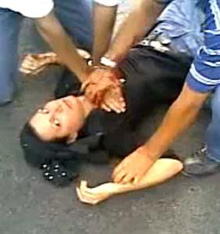‘Clash of civilizations’ vs. the clash within
Iranian protests highlight the critical nature of internal divisions within civilizations
By Bruce T. Murray
Author, Religious Liberty in America: The First Amendment in Historical and Contemporary Perspective
The ongoing street demonstrations in Iran conjure memories of the Tiananmen Square protests in China more than 20 years ago, the struggle against the military junta in Myanmar, and many other popular movements against repressive regimes.
These events highlight the concept of “clash within civilization” — a turnaround of the much-bandied phrase, “clash of civilizations,” popularized by the late Harvard University Professor Samuel Huntington. After the Sept. 11 terrorist attacks, the “the clash of civilizations” theory was often cited as an explanation for the conflict between the West and the Islamic world.
Boston University Professor Adam Seligman says the “clash of civilization” phrase is often misplaced and misused. More important than differences between civilizations, according to Seligman, are the fault lines WITHIN civilizations, nations and societies.
“We are involved in clashes within different cultures and different civilizations — and I use that term hesitantly,” Seligman said. “We need to understand what's happening within every universal discourse rather than just see these battle lines drawn between them.”
Iran offers a classic case-in-point of a clash within civilization. The street protests there have highlighted the deep divisions between the conservative, religious power-holders in Iran, and a significant segment of Iranian society that seeks freedom and connection with the outside world.
Seligman discusses the clash within civilization in the Web Sage article, “Beyond the Clash of Civilizations.” Seligman is also quoted in the University of Massachusetts Press book, Religious Liberty in America: The First Amendment in Historical and Contemporary Perspective by Bruce T. Murray. This book illustrates the clash in America between the country's religious consciousness and its liberal, secular outlook.
Religious Liberty in America is available at numerous university libraries and the University of Massachusetts Press.


